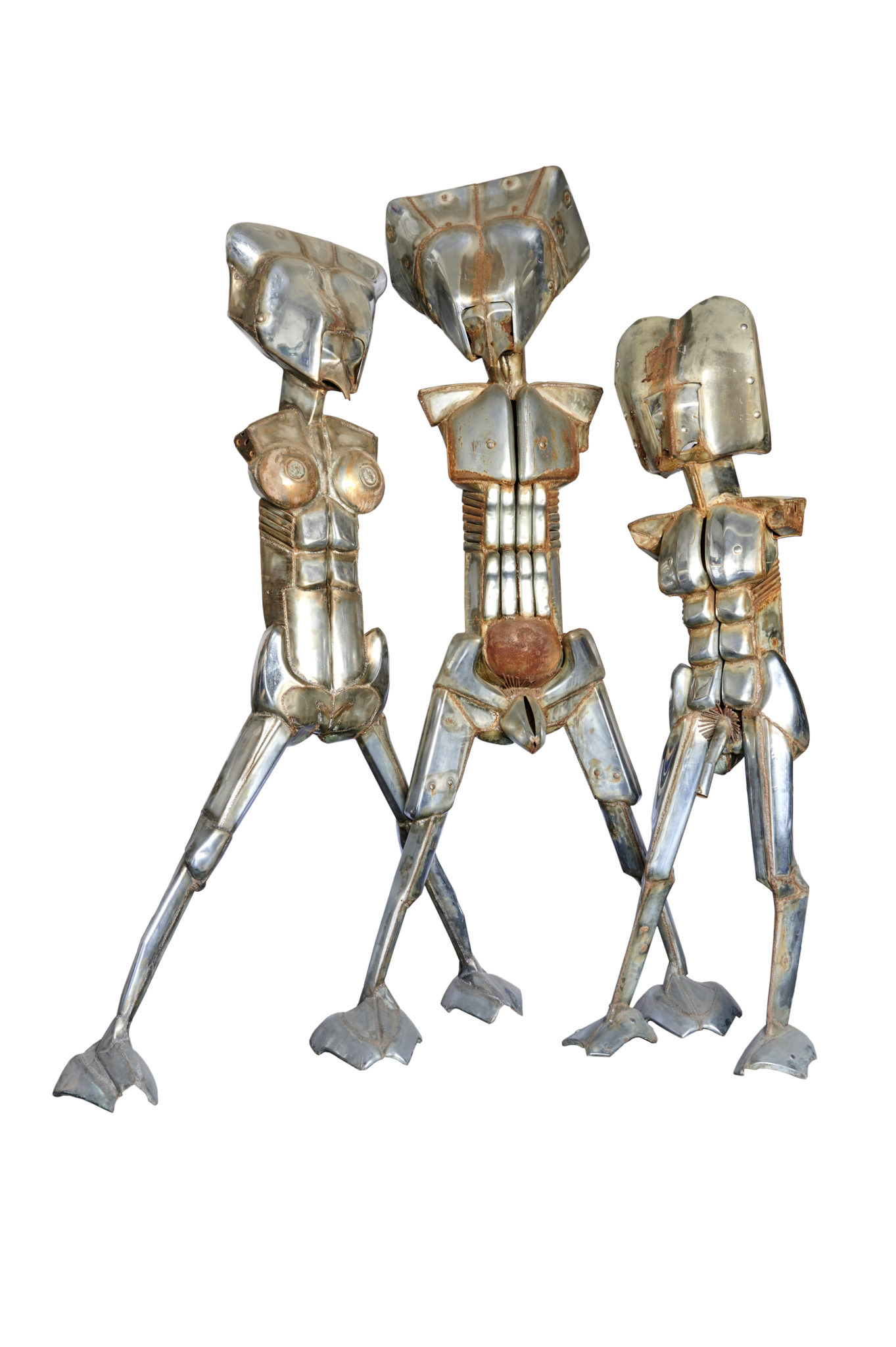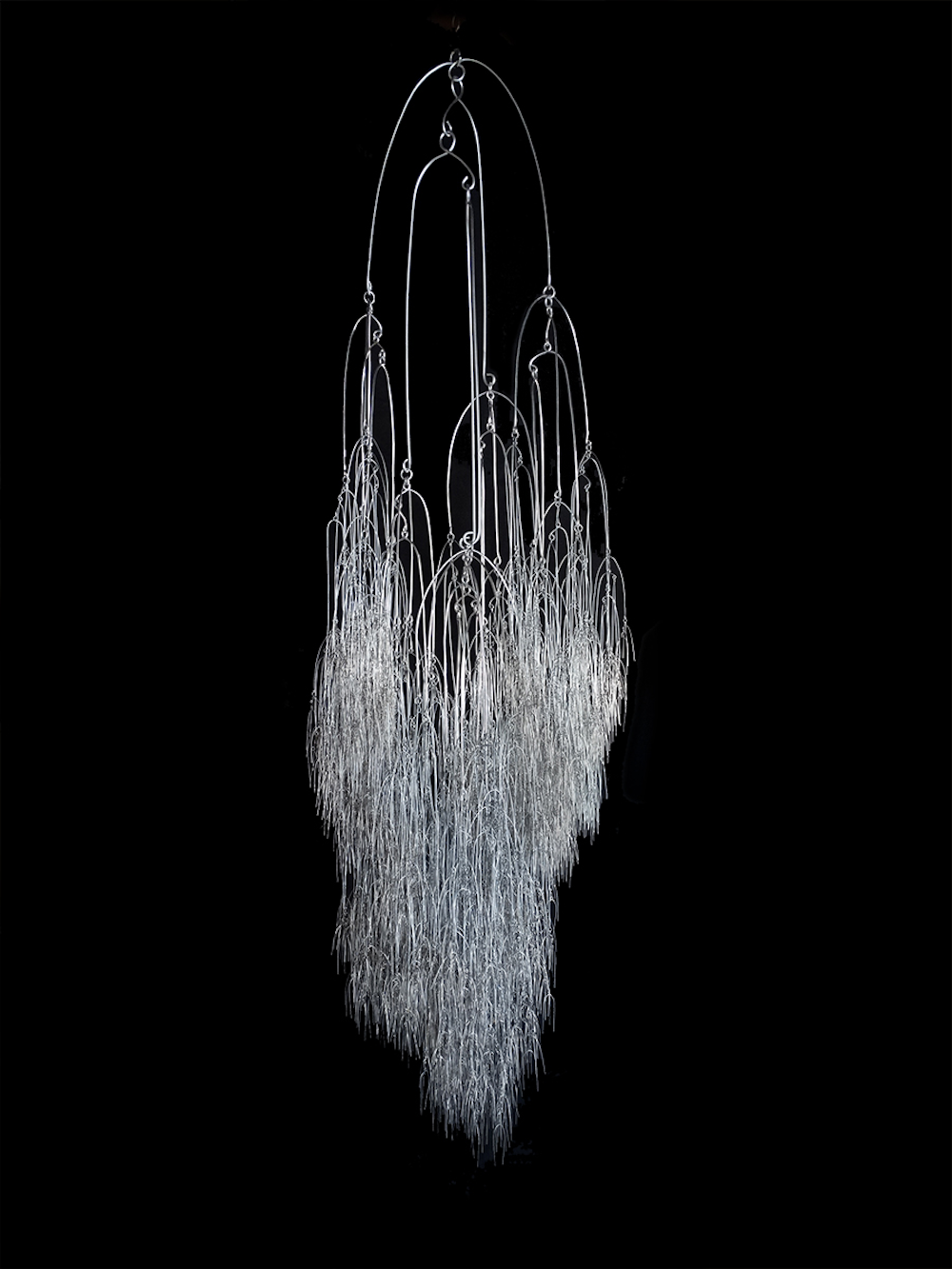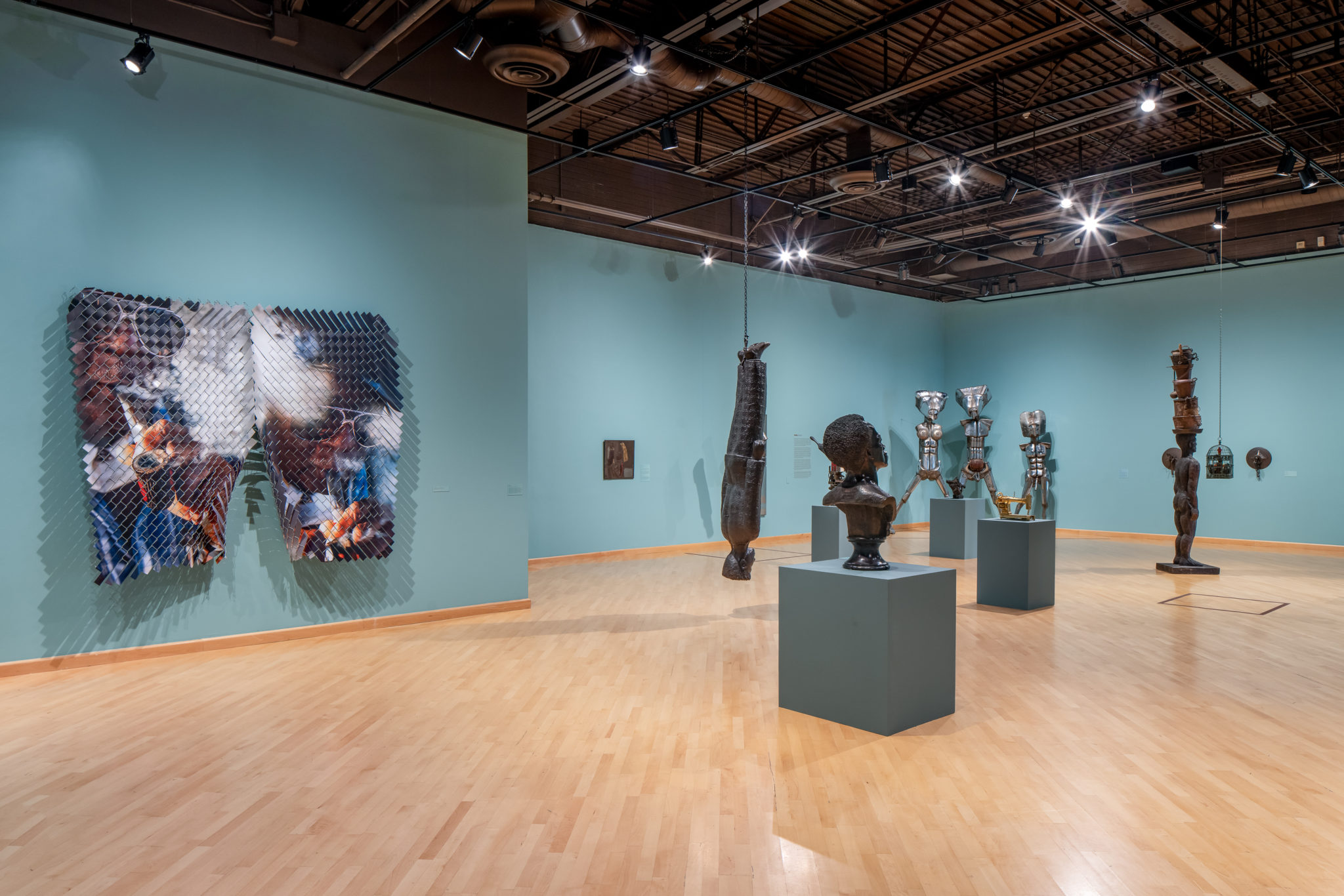What is a blacksmith? Although the meaning is one who works in heavy metals that are heated in contrast to whitesmiths who beat gold or tin, experiencing the LA Blacksmith group exhibition at the California African American Museum (CAAM), guest curated by independent curator jill moniz, evokes multi-layered emotions beyond the most detailed word etymology. With the historical context of the Watts Rebellion of 1965 and grappling with themes of identity, struggle, alienation, West African aesthetics, and car culture, these artists do not whisper or timidly hint. Shouting three-dimensionally with metals is the norm.

Ed Love The Big O Series. Courtesy of California African American Museum.
For example, Ed Love’s The Big O Series (1972, 1973) demands to be “checked out” in its unapologetic stance. All three chrome, tall figures with “What’s up” poses remind one of the confident posturing of talented Hip Hop rappers. A view from any direction allows one to witness Love’s mastery in welding steel and manipulating open space. Howling into your soul, these figures are less robot-looking and more Egyptian god -staring.
Betye Saar’s Red Signs of Transformation (2015) invites reflection about time both literally and metaphorically. In a society Instagram-marinated and baptized in Snapchat, this mixed-media assemblage invades paradigms about “time” and demands that a moment be shape-shifted. With a red alarm clock surrounded by cyclical rings under red chains sitting on a red chair, Saar demonstrates that she has time enough to stop, reflect and redefine. After all, Black culture is checkered with stories of heroines who died before their time, served unjust time, or those that were born before their time.

Affinity
Affinity (2017) by Charla Elizabeth with its aluminum and steel wire arrangement is reminiscent of a face looking but without eyes. The light reflecting off the intricately placed metal hair appearance tempts one to yield, walk around and appreciate the structure. Moreover, the colorless appearance facilitates an understanding that social stratification stemming from socioeconomic factors like wealth, income, race, education, gender, social status or derived power are enemies of people developing a true “affinity” toward one another.
Ultimately, LA Blacksmith does more than just show the technical excellence of its artists. With its manipulation of steel and metal structures, this exhibition reshapes distorted belief systems about human beings within the crucible of fire.
LA Blacksmith
California African American Museum
September10, 2019 -February 16, 2020


